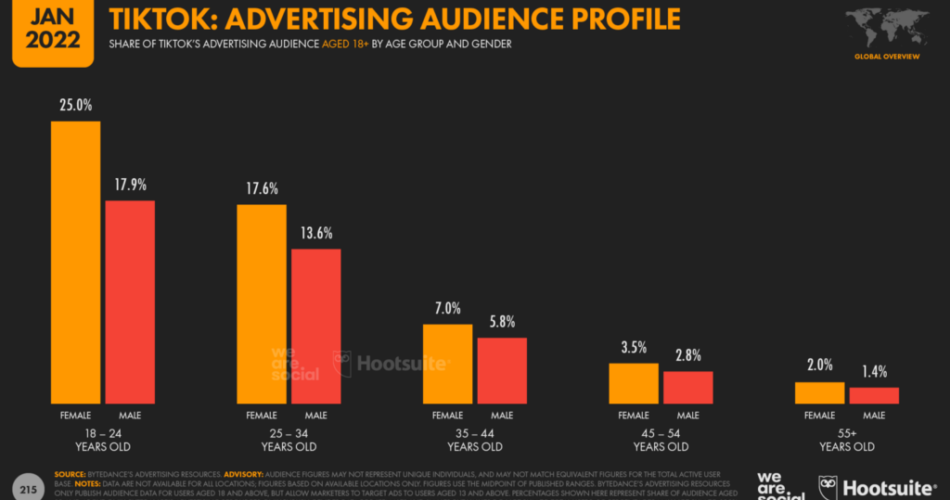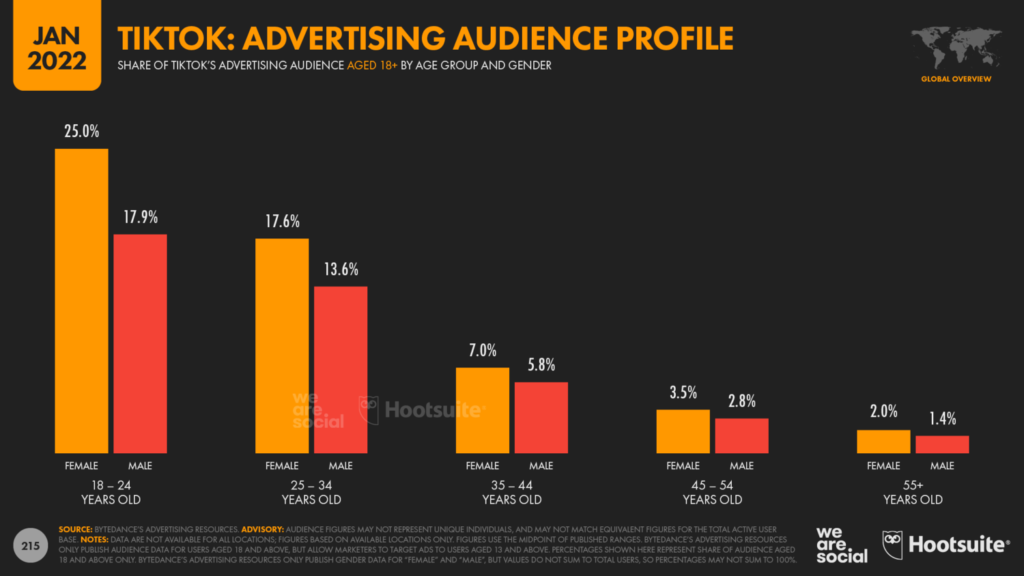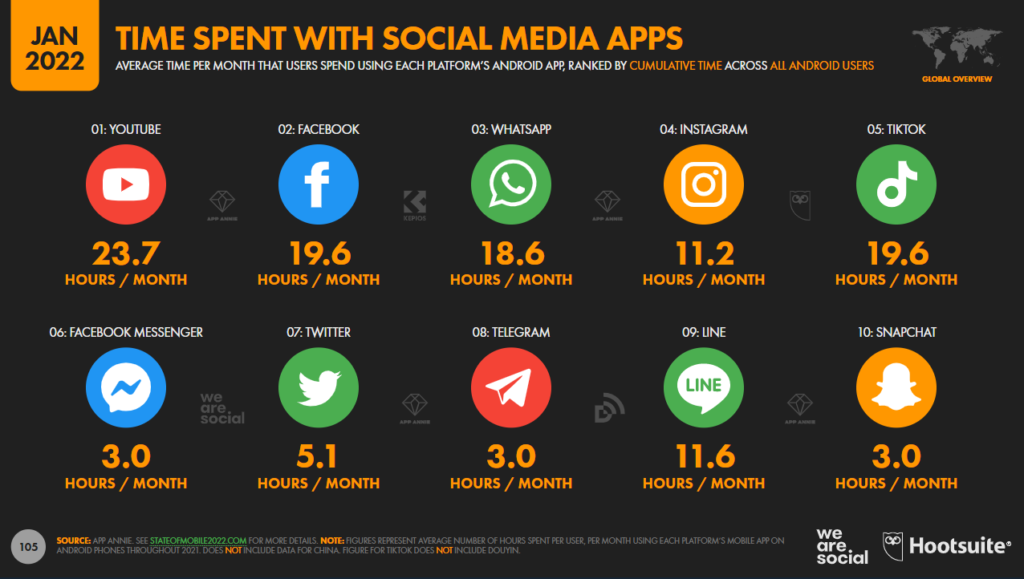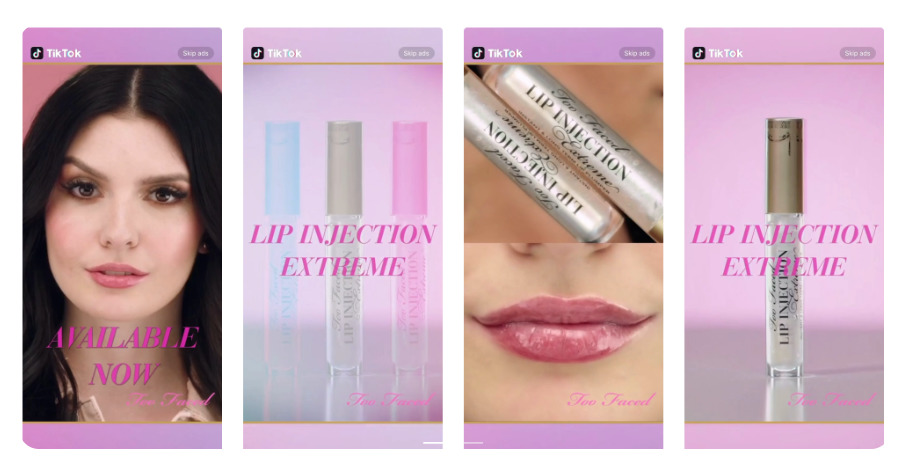Here’s an interesting statistic: Eight out of 10 TikTok users say they enjoy TikTok Ads.
At a time when more people are using ad blockers and paying for ad-free experiences, TikTokers are embracing advertising.
TikTok’s audience uses the app with an exploratory mindset and a willingness to engage with branded content. Ads are a natural part of the experience. You can use this to your advantage to sell more products.
In this article, you’ll learn how TikTok Ads work and how you can create campaigns that grab attention and turn interest into conversions.
- What are TikTok Ads?
- What makes TikTok Ads different from other social media advertising platforms?
- Five TikTok ad formats and how they can help your business
-
How to maximize your TikTok Ads Return on Investment (ROI)
- Get to know TikTok Ad Manager to learn how to gauge success and spot improvement opportunities
- How to set up TikTok Ads Manager and create your first ad
- Balance attention-grabbing creative with authenticity to engage your TikTok audience
- Target and retarget to reach ready-to-buy audiences
- Harness the power of influencers to reach new audiences
- A/B test your adverts to learn what works
- Conclusion
What are TikTok Ads?
TikTok Ads are TikTok’s pay-to-play offering for businesses. TikTok Ads give you the chance to put your products in front of the platform’s highly engaged user base to raise brand awareness, build relationships and increase sales.
With over one billion active users in more than 150 markets, TikTok Ads present a great opportunity to reach people who are interested in your product, even if your product is not marketed to Gen Z.
While the majority of TikTok’s global audience are younger users, it’s a platform that’s aging up. A quarter of all users fall into the millennial and Gen X demographics.
TikTok is also increasingly popular among Baby Boomers, with influencers aged 60+ amassing over 3.5 billion views.
And the type of products this audience is into is equally as diverse. Take a look at Ecwid’s list of top trending products:
- Cosmetics;
- LED Strip Lights;
- Kitchen Appliances;
- Stationery;
- Cleaning products;
- Star projectors;
- Water bottles;
- Books;
- Skincare products;
- Jewelry.
TikTok even has its own viral hashtag: #TikTokMadeMeBuyIt, which is a one-stop shop for the weird and wonderful products brands sell on the platform.
TikTok users embrace ecommerce. Some 67% of users say they’re inspired to shop when scrolling on the app, even when they weren’t planning to. Over a third say they immediately want to buy a new product they’ve discovered.
TikTokers are also some of the most engaged of any social media platform, spending an average of over 19 hours a month on the app.
TikTok advertising is the best way of capitalizing on this behavior.
What makes TikTok Ads different from other social media advertising platforms?
TikTok’s biggest unique selling proposition (USP) is its uniqueness. Unlike Facebook, Instagram, and Twitter, where users often see content and ad formats shared across platforms, TikTok differentiates itself as a place to discover something new.
In a Neilsen study of 8,000 TikTok users, 79% said they find content on TikTok to be unique or different. Users describe the content they see on the platform to be authentic, genuine, unfiltered, and trendsetting.
These sentiments extend to advertising, with 68% of users deeming advertising content to be different from competitor platforms. Ads are viewed as real, unique, and fun. Plus, 72% of users find them more inspiring and 45% see them as creative vs. 29% on other platforms.
This positivity comes from TikTok’s mantra for brands: “Don’t Make Ads. Make TikToks.”
Blake Chandlee, President of Global Business Solutions at TikTok, says:
When we invite brands to make TikToks, we’re challenging them to transform the way that they connect with their audiences, because we know that it has the power to transform their business.
TikTok is an entertainment platform. People use it as a place to be their true selves and share content they wouldn’t post anywhere else.
Successful ads fit into this ecosystem. Rather than disrupting the user experience, they fit seamlessly with it. Ads show up on users’ “For You” feeds in a way that’s as funny, educational, or weird as the organic content they see.
For example, to drive awareness and increase engagement around its sustainability efforts, HP partnered with creators to run a branded hashtag challenge where users were invited to create and share content.
Here’s one of those ads with @dreaknowsbest:
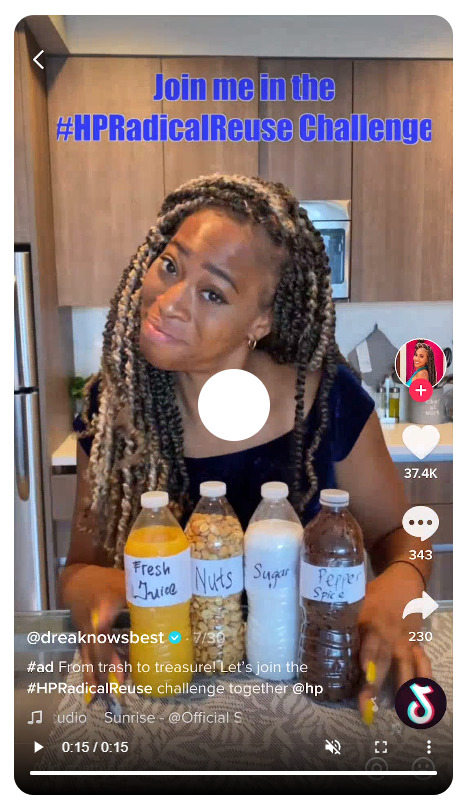
Compare that to one of Drea’s organic TikToks:
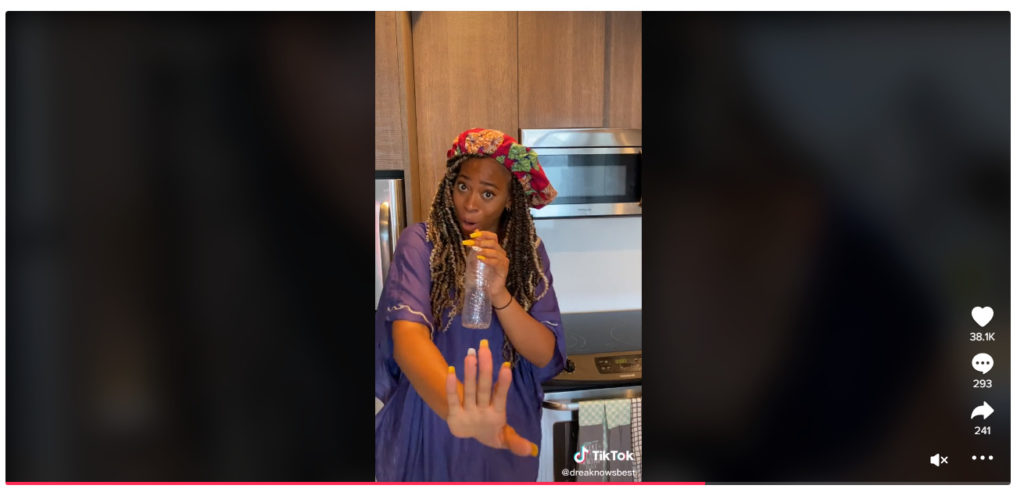
Both share the same aesthetic and are entertainment-focused. Both are filmed on a phone without any kind of big-budget production.
The ad is as authentic as the organic content, making users more receptive to it. This helped HP earn 4.7 million impressions and 4.4 million views.
Users’ willingness to embrace ads is reflected in performance. According to JungleTopp, TikTok ads generate 155% more clicks and have a cost-per-impression (CPM) of around five times lower than Facebook and Instagram.
JungleTopp estimates that with 65% of your original Facebook Ads budget, you can get similar results on TikTok.
This is not to say you should ditch Facebook in favor of TikTok. Rather, you should take advantage of TikTok’s outlier status among social platforms to reach new audiences.
Five TikTok ad formats and how they can help your business
TikTok offers several creative ad formats for brands to experiment with. Each comes with its own benefits and drawbacks.
1. In-Feed Ads
In-Feed Ads are embedded in a user’s For You feed. Like native content, video ads autoplay, and users can like, comment, share, follow, or re-use sounds.
The organic style of In-Feed Ads makes them naturally familiar to users, who can interact with videos as they do with organic content. Where ads stand out from user videos is in what you can ask people to do.
You can include multiple call-to-actions (CTAs) in an In-Feed Ad to inspire action and drive traffic to your product pages.
For example, lifestyle brand Nolan Bros ran In-Feed Ads to grab attention for its range of sunglasses and attract-high clicks with a “Shop Now” button.
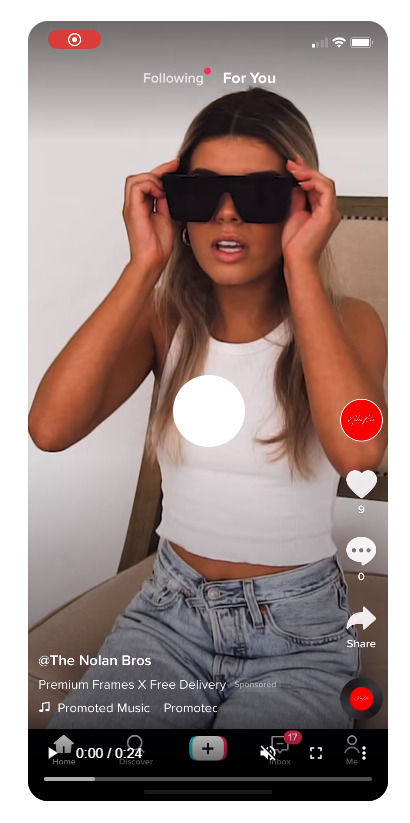
By installing the TikTok Pixel on its website, Nolan Bros was also able to create a custom audience to retarget users who had browsed a product page in the past 180 days but not converted.
This resulted in a low average cost-per-click of $0.21, with a 1.2% click-through rate, of which 3.4% directly resulted in conversions.
The downside to In-Feed Ads, however, is competition. In-Feed Ads put you up against an endless feed of user-generated content (UGC), meaning videos can be scrolled past quickly.
To grab attention, entice users with a hook.
- Use action and audio to create intrigue. For example, Nolan Bros’ ad starts with a customer trying on sunglasses and talking to the camera. Her actions are enough to make you switch on the sound to find out what she’s saying.
- Lead with an enticing headline. Explain what readers will learn by watching the ad (e.g., “3 reasons why…” or “This product helps you [solve problem]”).
- Use a provocative visual to pique interest. For example, Nolan Bros uses a well-framed shot of its product.
2. Brand Takeover Ads
Brand Takeovers are full-screen ads appearing as soon as a user opens TikTok. Ads display for three to five seconds giving your product guaranteed attention. However, users will only see one Brand Takeover ad per day.
By placing your message front and center, Brand Takeovers can deliver high impressions, making them an effective way to increase brand awareness and conversions.
Beauty brand Too Faced, for example, used a Brand Takeover to promote its lip gloss.
By taking advantage of TikTok’s vertical split-screen, the ad cleverly demonstrates the before and after effects of the product to show its USP. A strong CTA follows this to drive customers to the product page.
The combination of prime ad placement and strong value-led creative helped Too Faced achieve 7.6 million impressions and 1.3 million clicks in a single day.
The downside to Brand Takeovers is engagement. Users are unable to add likes or comments. Ads are also more clearly identifiable as ads, which can alienate some users.
The key to successful Brand Takeovers is not to abuse your position with blatant selling. The right targeting will help you reach people with an interest in your product, but keep in mind why people are opening TikTok in the first place: to be entertained.
Show the value of your product and make visuals engaging.
3. TopView ads
Like Brand Takeover Ads, TopView ads give you the top spot when a user opens TikTok.
While this makes them more identifiable as ads, users can share, comment, and engage with TopView videos in the same way as native content.
TopView ads also give you up to 60-seconds to convey your message, allowing you to hammer home the value of your product and generate a high number of impressions.
Fashion brand CELINE is a great example of how to use TopView ads to inspire action.
To promote the virtual live streaming of its seasonal runway show from Monaco, CELINE created four TopView ads featuring models wearing items from the latest collection.

The ads work on three levels:
- They’re aesthetically pleasing. The use of color and architecture grabs attention from the start encouraging viewers to watch on to learn more.
- Ads are soundtracked by a trending song. Like trending hashtags, using a popular song increases impressions and engagement. Users can find your content by searching through trending sounds. They can then re-use the sound in their content.
- They use a clear and actionable CTA. “Watch Now” promotes urgency. Users are encouraged to act in the moment to avoid missing out.
In two days, the ads earned CELINE 52 million impressions, 22.9 million two-second views, and a click-through rate of 17.74%.
According to TikTok, 71% of users say TopView grabs their attention. The Nielsen study also showed that ads are also 67% more effective at driving sales for the Consumer Packaged Goods (CPG) industry compared to total paid TikTok.
Use TopView Ads when you want to increase engagement and traffic for a new product.
4. Branded Hashtag Challenge
Branded Hashtag Challenges invite the TikTok community to engage with your brand.
By encouraging user-generated content (UGC), this type of ad more than any other has the potential to make your brand or product viral.
Take mattress brand Simmons. To win in an increasingly crowded market dominated by online brands such as Casper, Simba, and Emma, Simmons used a Branded Hashtag Challenge as a way to introduce the brand to modern consumers.
Working with TikTok Creators, including comedians, dancers, and athletes, Simmons created the #Snoozzzapalooza challenge, encouraging people to stage dive into their beds at a time when music festivals had been canceled.
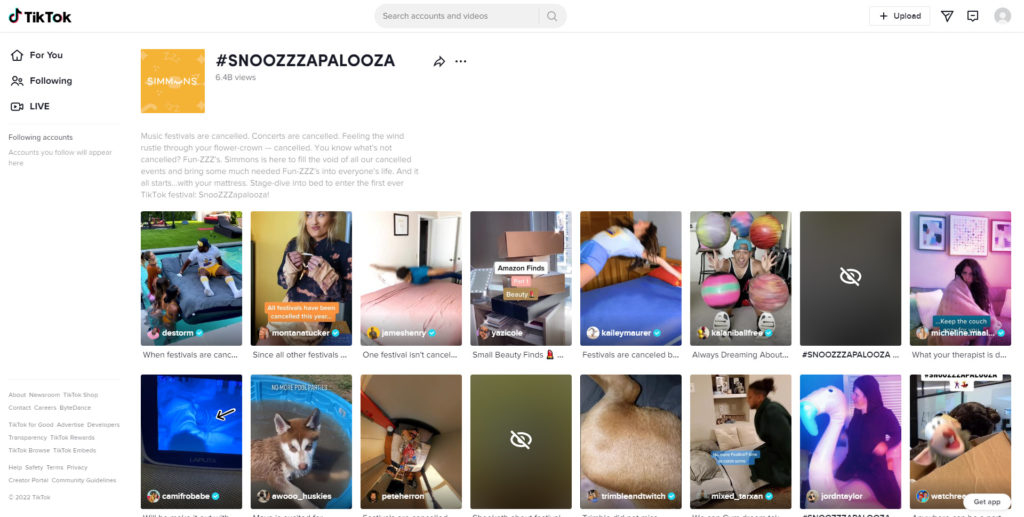
The challenge inspired people to have fun without leaving their bedrooms. More than 1.1 million TikTok users got involved, creating over 2.3 million videos that amassed more than six billion views.
The challenge helped Simmons raise brand awareness with the Gen-Z audience, increasing website traffic by 107%.
Branded Hashtag Challenges rely heavily on UGC, which means success requires interest. Simmons achieved virality for three reasons:
- The task was fun and simple. If you want people to participate in a challenge, make it easy for them to go. Everyone has a bed. Simmons encouraged people to get creative with it. Doing so enabled the audience to increase their engagement while spreading the campaign.
- Creators equal eyeballs. Creators are TikTok’s influencers. TikTok Creator Marketplace lets you collaborate with much-loved users based on your industry, budget, and goals. This helps a hashtag spread faster.
- The challenge was timely. By running the challenge during lockdowns, Simmons had a captivated audience. Think about seasonality and trends for your challenges. Shared likes and experiences are a good way to drive mass participation.
5. Spark Ads
Spark Ads let you boost organic content from your account or other users as long as you have permission (e.g., Creators promoting your Hashtag Challenge) as an In-Feed Ad or TopView.
Unlike In-Feed Ads, engagement on Spark Ads is linked back to the original post. This helps extend the reach of your content, boosting channel engagement in the process.
For example, sports streaming service Kayo Sports used Spark Ads to promote its best videos from onsite content created at a race event.
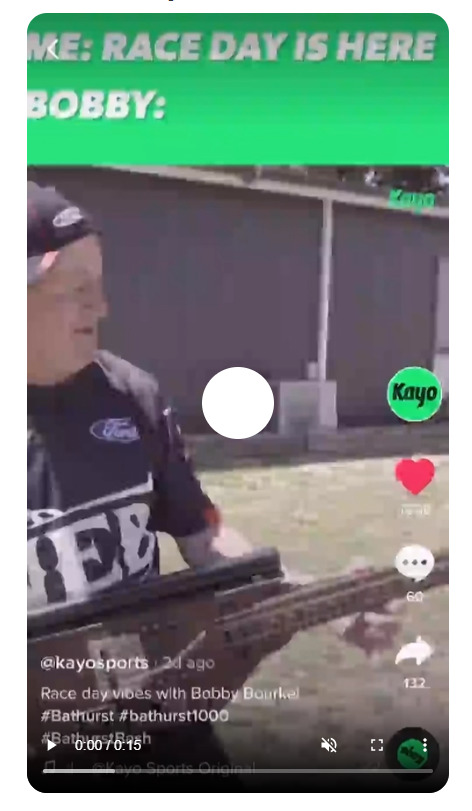

Source link


